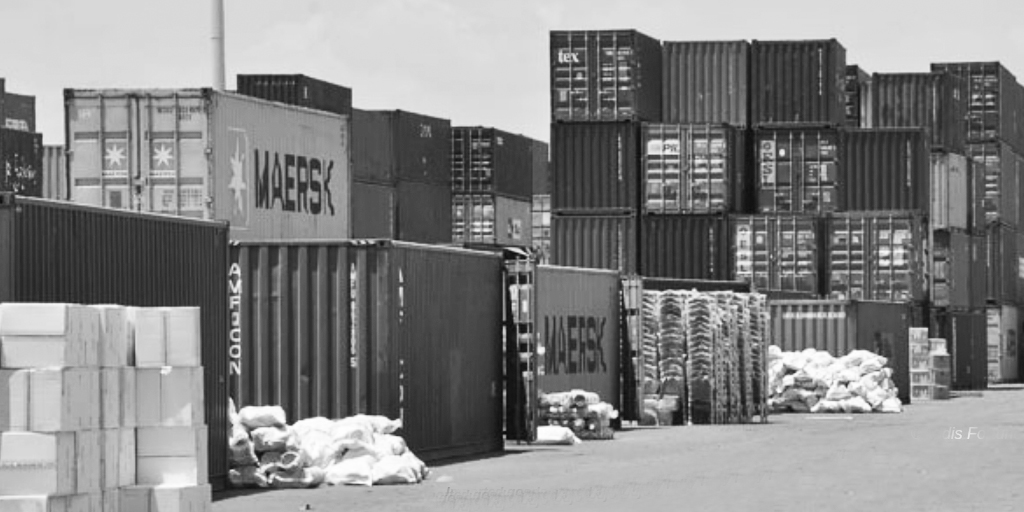
Established some 12 years ago, the Ethiopian Shipping and Logistics Services Enterprise (ESLSE), in line with the country’s economic growth targets, has been aspiring to become a preferred logistics company in Africa by 2025. While Ethiopia has registered remarkable economic growth over the past decade or so, one of the major targets of the government has been boosting export performance. In this regard, it has recognized the importance of infrastructure, and logistics services in achieving its targets.
With a request from Government, UNDP has also commissioned a study on the development of National Logistics Strategy to address bottlenecks specific to trade logistics. The study’s major goals are to design a comprehensive logistics strategy for the country with the due emphasis on planning and implementing efficient transportation and storage of goods, including services, and related information from the point of origin to the point of consumption. With this, it is set to put in place an effective trading system and improve the nation’s trade balance.
Moreover, to facilitate and set up effective logistics services and logistics network, the government has been establishing dry ports in various parts of the country. Currently, the country has seven dry ports. Ashebir Nota, Corporate Department Communication Director at ESLSE told The Ethiopian Herald that the seven dry ports are set up in Modjo, Semera, Kombolcha, Mekelle, Dire Dawa, , and Kality.
Ethiopia aspires to attain structural change as a way forward to sustain its successive and rapid economic growth. The government has picked and been pursuing industrialization as an instrument to prompt structural change. That is why it has been promoting agroprocessing industries and establishing industrial parks, as the government believes, its policy of developing and transforming agriculture has laid the foundation for economic take-off.
Ethiopia is a country committed to achieving structural economic transformation through its newly built state-of-the-art industrial parks. Besides, the industrial parks are believed to help narrow the balance of payment deficient through diversifying and adding value to the country’s exports.
Established at the same time with ESLSE, Modjo is the biggest dry port in the country. As its construction and ongoing expansion projects are set to meet international standards, it is in a position to compete in the East African region. It would also provide effective logistics services to industrial parks to support them in boosting their exports.
Recently, ESLSE announced that Modjo dry port is set to be linked with industrial parks through rail and road infrastructure to boost the country’s exports. Ashebir said the government has given due attention to the expansion of the Modjo dry port by preparing a new expansion plan to support Ethiopia’s manufacturing export. “An industrial processing center will also be set up at the port,” he added.
Two years ago, the World Bank has approved 150 million USD for the project to increase the efficiency of trade logistics in Ethiopia. The project has focused on improving the Modjo Dry Port, a key transportation hub that handles the majority of Ethiopia’s import and export trade, but which has been a major bottleneck on the vital Ethio-Djibouti trade corridor.
The project has been supporting investments in physical infrastructure and ICT systems, as well as regulatory improvements which are set to increase exports, generate jobs, and raise incomes of producers and traders.
With an additional budget, the dry port will be interlinked with the railways and expressways in the country to deliver effective logistics services to the industrial parks and boost export.
The project will also increase the size of the dry port from 158 to 188 hectares.
“Modjo is becoming a hub of dry port services in Ethiopia as it meets international standards,” Ashebir said adding “It is providing a better container and logistics services more than ever.”
Modjo port, which is the largest of all, hosts almost 74 percent of the country’s imports.
Semera is the second dry port that commenced operation next to Modjo. It is currently delivering logistics services on 162 hectares of land.
Moreover, ESLSE has finalized the master plan and business plan to expand existing and construct new dry ports in Mekelle and Woreta cities of the Tigray and Amhara states respectively. The Mekelle dry port has been built on 42 hectares of land.
In addition, ESLSE has also opened a logistics at the Hawassa industrial park. According to him, Hawassa dry port is offering logistics and transport services for Hawassa Industrial park investors. “We have also received three hectares of land from the city administration to further expand our services.”
Dire Dawa dry port, whose construction has commenced recently, is located in the Eastern part of the country and covers 34 hectares of land. And at the end of this year, the construction of the dry port is expected to reach 50 percent. So far, it has been delivering service on three hectares of land. Similar developments have also been undertaken in Kality.
As to Communication Director, the dry ports have been reinforcing the country’s logistics. The Ethiopian Government is working with strong commitment to build and upgrade organizational capacities to provide world class and competitive shipping and logistics services; thereby contributing towards the rapid economic growth of the country, he noted.
The Ethiopian Herald March 7, 2019
BY ESSEYE MENGISTE




